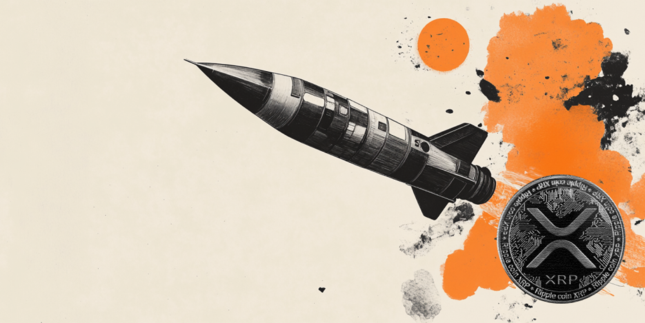Miners spend billions of dollars every year pulling precious metals out of the ground. They toil mightily for years on end to produce these stores of value – but then they turn right around and sell all their gold and silver immediately in exchange for fiat currencies.
If you stop to really think about it, this may seem strange.
These businesses quite literally mine real money. But, like nearly every other business or individual, they still seem to be stuck in the fiat currency paradigm.
It takes tremendous risk, capital, and time to find a resource, develop a mining project, and dig up and process the metals. It is extremely difficult to produce gold and silver at a profit.
Inflation constantly pushes up costs and puts pressure on the economics of the miners. They may face tremendous stumbling blocks along the way – from governments, capital markets, indigenous activists, eco-fanatics, union bosses, and many others.
All this underpins the scarcity value of the gold and silver that comes out of the ground – and provides a stark contrast to the amount of work involved in creating fiat money (i.e. none).
Of course, mining companies do need cash to pay bills. But to the extent that it’s not needed immediately, wouldn’t it make sense to hold onto some bullion to preserve purchasing power for future expenses?
Very few miners hold Gold and Silver rather than sell it all
If mining companies believe that gold and silver are better stores of value than fiat currency, then it would seem incumbent on them to hold onto some of their product where they can.
As far as we can tell, though, only a couple mining companies – First Majestic Silver and SilverCrest Metals – have held back a meaningful amount of their production in the past 10 years.
SilverCrest actually does more than delay sales – it has deliberately socked away more than $20 million in gold and silver bullion on its balance sheet, currently representing about 20% of its treasury assets. In other words, these folks eat their own cooking – and plan to eat more.
The company’s president, Chris Ritchie, believes holding gold and silver should become “an additional capital allocation choice that should be considered” for the mining industry.
"SilverCrest has added this choice alongside our other capital allocation opportunities because of the functionality of our product -- and we want to give our investors more of what they want while also hedging against some of the risks associated with mining. The option to hold bullion is available for every individual and business that’s trying to keep up with rising cost pressures.”
“The irony is that the gold and silver mining industry spends huge sums of money over long periods of time, and yet we choose to hold fiat currencies as our preferred store of value versus the product we work so hard to get.”
Miners may struggle to produce future ounces at today’s prices
Discussing this idea with Money Metals, Ritchie argued that the cost to replace the gold and silver ounces sold today is likely to be much higher in the future. If companies were to include these realities in their decision-making processes, financial stability and returns could be significantly improved.
“The industry has a horrible capital allocation track record. Poor business, capital markets, and resource allocation decisions have played an enormous role in creating the lack of interest we see in the sector today,” Ritchie pointed out.
The SilverCrest president points to the undercapitalization of the mining sector more broadly to support his point. Precious metals miners represent a fraction of 1% of the global marketable investment index even though they supply a product that is the best store of value in history.
A change in mentality may take time.
One example of the prevailing mindset is when Idaho-based Money Metals reached out to Hecla, a large silver-focused miner that is likewise based in Idaho, seeking support for a 2018 sound money bill pending in the state legislature. The response: Sorry, gold and silver aren't money.
Idaho was once the epicenter of the gold and silver mining industry. But projects have faced major obstacles in recent decades, and the Gem State’s current liberal governor seems outright hostile to the monetary metals.
In fact, Idaho Gov. Brad Little just last week vetoed a popular sound money bill in order to prevent his state treasurer from holding gold and silver bullion to help protect the state’s dollar-centric reserve funds.
In doing so, Little parted ways with his counterparts in states like Utah, Tennessee, Texas, and Ohio – and sent a terrible message to the precious metals industry in the state.
Excessive hedging undermines profitability, shareholder interests
Barrick Gold also provides an interesting case study.
The company’s stock is the same price today as it was 20 years ago. Meanwhile, gold itself is up over 600% in the same period of time!
It doesn’t take a financial wizard to see that you would have been a lot better off investing in the end product rather than the mining process.
In fairness, mining is a tough business and Barrick is a survivor. But it’s also one of many large mining companies that has capped its upside potential by hedging exposure to metals prices via futures markets. Hedging means, in effect, selling production early – well before the metals are even brought out of the ground.
Excessive and poorly timed hedges have destroyed shareholder value over the years.
Even when hedges DO pay off in the near term, they work at cross purposes with long-term investors who buy mining stocks because they want to fully participate in a bull market for the underlying asset.
Short-sighted thinking harms long-term industry health
Quarterly earnings reporting and other pressures on public companies has led to lots of short-term thinking. The benefits of holding gold and silver shine brighter the longer the time frame in which you evaluate them.
Given the years or decades necessary to discover, build, and produce from a mine, the loss of purchasing power over that journey becomes a significant financial drag that is rarely considered.
Mining companies that sell all their gold and silver ounces today usually hope to replace them at a lower cost in the future. But is that a realistic assumption?
Almost no companies hold gold on the balance sheet.
Retaining some bullion on the balance sheet adds leverage. The returns on ounces held above the ground are not burdened by rising costs. They are not exposed to operational risk. And they reliably earn a better “real” yield over the medium to longer term than cash, CDs, and bonds.
Selling every ounce of precious metals mined immediately, regardless of price, is bad business, and it’s no wonder the mining sector struggles.
A strong case can be made that no company (or person or government entity) should hold cash reserves entirely in dollars given their constant devaluation and inherent risk. But so far there are few other examples of public companies holding gold on their balance sheets. Overstock and Palantir are two of them.
If miners hold back supply, it could positively impact price
The gold market is small. The silver market is even smaller.
Whereas demand for metals can surge suddenly, the supply response will take a significant amount of time. The capital required to build new projects is large and capital availability has dwindled to a trickle.
Seizing upon supply and demand imbalances is the holy grail for investors in cyclical industries. Mining companies can add value by retaining production while they wait for up-cycles to mature.
A choice to hold back some of their production from the market – especially when spot prices are below the all-in cost of discovery, development, and production – could also positively impact the prices of gold and silver.
That’s particularly true with silver, which is dramatically undervalued versus gold on a historical basis – but now appears poised to catch up. Higher prices would ultimately improve cash flows, supporting the health of the industry.
Here’s the bottom line...
Mining companies that fail to appreciate that they are literally pulling money out of the ground may continue to disappoint metals investors. But miners that stop being kneejerk “price takers” can expect to be rewarded.
Money Metals Exchange and its staff do not act as personal investment advisors for any specific individual. Nor do we advocate the purchase or sale of any regulated security listed on any exchange for any specific individual. Readers and customers should be aware that, although our track record is excellent, investment markets have inherent risks and there can be no guarantee of future profits. Likewise, our past performance does not assure the same future. You are responsible for your investment decisions, and they should be made in consultation with your own advisors. By purchasing through Money Metals, you understand our company not responsible for any losses caused by your investment decisions, nor do we have any claim to any market gains you may enjoy. This Website is provided “as is,” and Money Metals disclaims all warranties (express or implied) and any and all responsibility or liability for the accuracy, legality, reliability, or availability of any content on the Website.
Recommended Content
Editors’ Picks

EUR/USD holds gains below 1.1000 ahead of US CPI release
EUR/USD is tirmimng gains while below 1.1000 in the European session on Thursday. The Euro gains on the German coalition deal and Trump's 90-day pause on reciprocal tariffs. Meanwhile, the US Dollar finds demand on profit-booknig ahead of the US CPI data release.

GBP/USD trades firm above 1.2850, US CPI data awaited
GBP/USD sustained the rebound above 1.2850 in European trading hours on Thursday. The British Pound capitalizes on risk appetite, courtesy of Trump's tariff pause, allowing the pair to recover ground. But further upside hinges on the US CPI data and US-Sino trade updates.

Gold price rallies further beyond $3,100; eyes all-time high amid US-China tariff war
Gold price continues to attract safe-haven flows amid rising US-China trade tensions. Bets for multiple Fed rate cuts weigh on the USD and also benefit the precious metal. A solid recovery in the risk sentiment fails to undermine the safe-haven XAU/USD pair.

XRP back above $2 liquidating $18M in short positions, will the rally continue?
Ripple seeks support above $2.0020 on Thursday after gaining 14% in the past 24 hours. The token trades at $2.0007 at the time of writing, reflecting growing bullish sentiment across global markets.

Tariff rollercoaster continues as China slapped with 104% levies
The reaction in currencies has not been as predictable. The clear winners so far remain the safe-haven Japanese yen and Swiss franc, no surprises there, while the euro has also emerged as a quasi-safe-haven given its high liquid status.

The Best brokers to trade EUR/USD
SPONSORED Discover the top brokers for trading EUR/USD in 2025. Our list features brokers with competitive spreads, fast execution, and powerful platforms. Whether you're a beginner or an expert, find the right partner to navigate the dynamic Forex market.